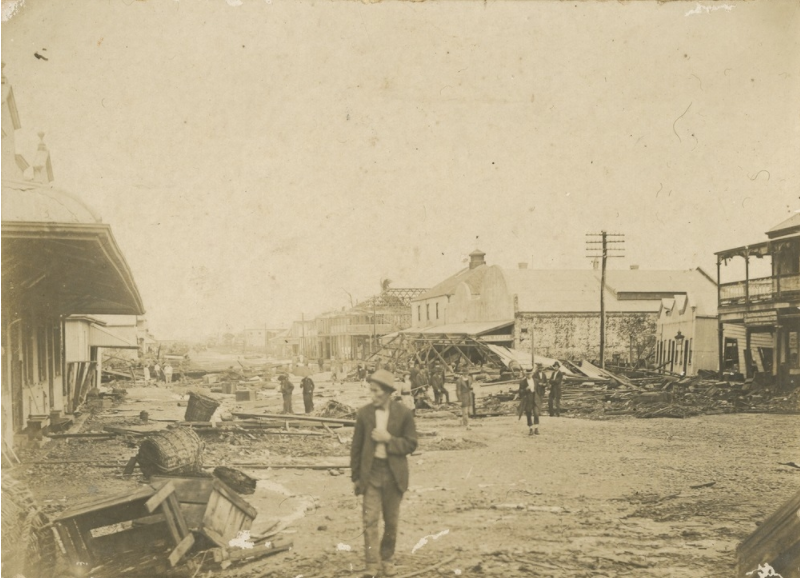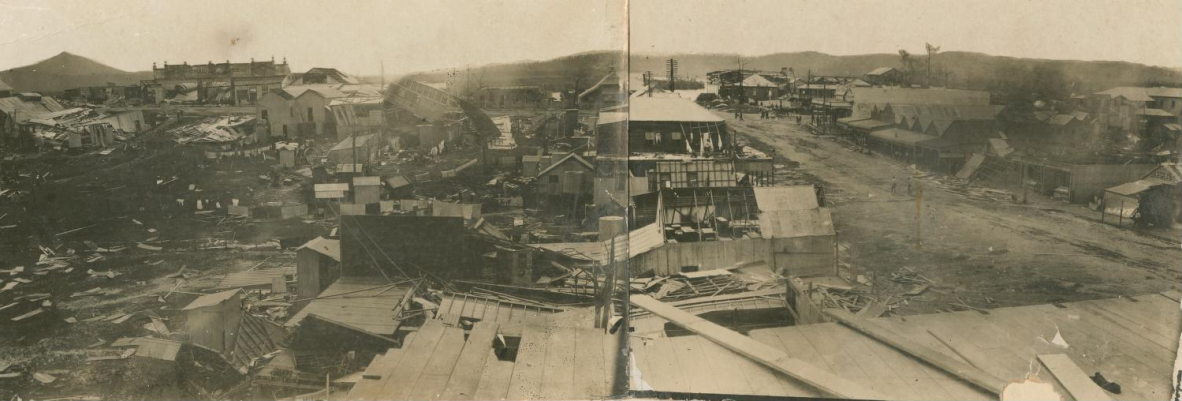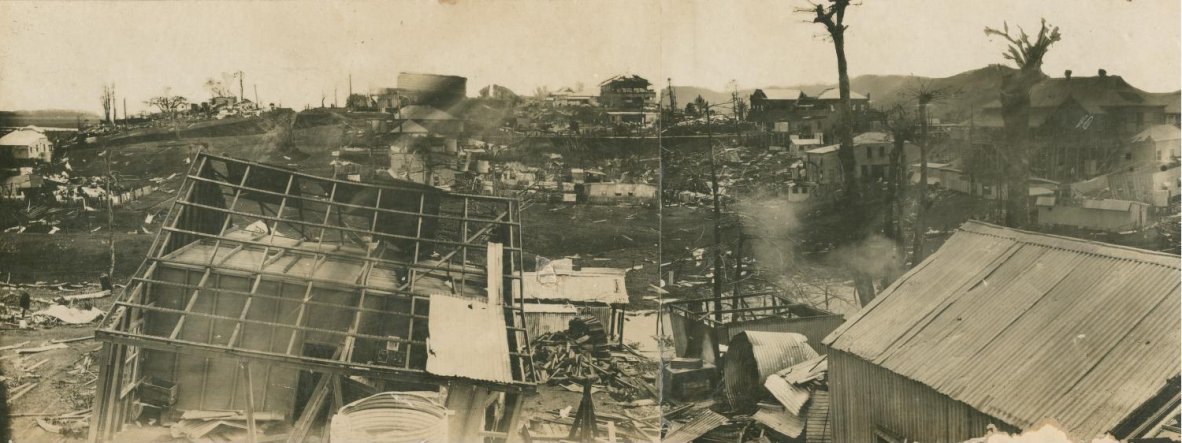The deadly cyclone season of 1918
By R. Hillier - Librarian, State Library of Queensland | 24 January 2018
One hundred years ago this summer, two of the deadliest cyclones recorded in Australian history struck north Queensland within months of each other. On January 21, the Mackay Cyclone devastated Mackay and the surrounding area. Less than two months later, on March 10, an even stronger cyclone hurled into Innisfail. In addition to the State Library of Queensland images already documenting these cyclones, a number of newly digitised images from the collection further bring to life the destruction of these events.
In the early hours of Monday morning on January 21, 1918 a category 4 cyclone launched in to Mackay carrying violent winds and a 3.6 metre storm surge. There were reports of 2 to 3 metre waves breaking in the main street of the town. Damage was widespread. Of the 1400 houses in Mackay at the time, 1300 were destroyed or significantly damaged. Thirty people lost their lives as a result of the cyclone, most of them in Mackay township.
This photograph, from the Mt Jukes Coffee Plantation photographic collection, captures the desolation in the immediate aftermath of the cyclone.

The aftermath of the 1918 Mackay Cyclone, Acc 7063 Mt Jukes Coffee Plantation photographs. John Oxley Library, State Library of Queensland. Image: 7063-0001-0044
The massive cyclone that all but destroyed Innisfail a couple of months later is considered the worst cyclone ever to hit a populated area in Queensland. The category 5 storm crossed the coast on Sunday evening on the 10th of March. Such was the devastation, that only 12 buildings are reported to have remained standing after the cyclone. In the nearby settlements of Mission Beach and Bingil Bay every single structure was destroyed and massive storm surges and a tidal wave were reported. The town of Babinda was also almost completely destroyed. At least 100 people were killed as a result of the cyclone, many of them Aboriginal residents at the Hull River Mission.
These two panoramic photographs by an unidentified photographer, show the terrifying extent of the damage to downtown Innisfail.


Panoramic view of a cyclone-hit Innisfail, Queensland, 1918. Accession 29541 Panoramas of Innisfail. John Oxley Library, State Library of Queensland. Image: 29541-0001-0001
More images documenting the destruction caused by these cyclones can be found on our One Search catalogue.
R. Hillier - Librarian, State Library of Queensland
Comments
Your email address will not be published.
We welcome relevant, respectful comments.